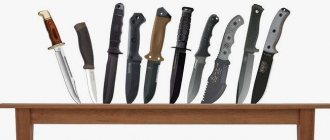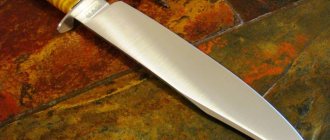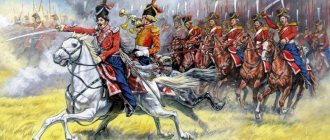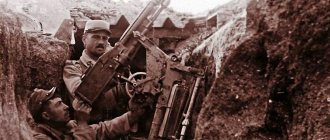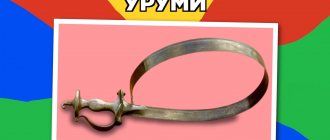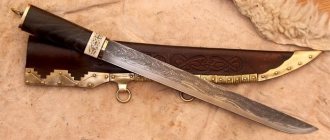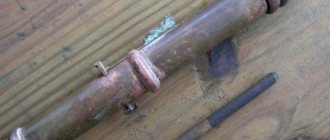Almost from the very beginning of history, humanity has been accompanied by edged weapons, without which it would be difficult to imagine the formation of Civilization. But if previously such objects were very primitive and of the same type, now, thanks to the improvement of technology, you can find a wide variety of shapes, varieties and elements of blades. In view of this, before purchasing such products, it is important to familiarize yourself with their design features.
Modern man perceives many things as ordinary. And among them, undeservedly, were knives - precisely those products that are one of the most ancient companions of man. Having undergone numerous fundamental changes, they remained faithful only to the basis of their design, while the material of the blade and handle, the shape and length of the blade can be completely different.
Currently, the ancient traditions of weapons making in Russia are being revived. And along with them - an interest in how history developed and how the blade was made in different centuries. But to describe this, one review article will not be enough, because the world of steel cutting products is vast, which, in turn, causes difficulties with systematization, structuring and classification of blades.
Basis of classifications of edged weapons
Nevertheless, scientists, fans and collectors of edged weapons managed to sort them, taking the design features of cutting products as a basis. For example, they were able to identify types of blades, focusing on their main characteristics (type of side profile, cross-sectional shape, length and elements of the blade, etc.).
Depending on the shape of the blades and their length, edged weapons are divided into three types:
- Short blade. This type includes products with a blade length ranging from 30-50 cm. This category includes two groups of weapons: knives and daggers. They are distinguished from each other by the sharpening of the blade, because the knife is usually sharpened only on one side, and the properties of the dagger are ensured by its double-edged blade. Any type of cutting weapon that has a short blade can also have different shapes. Depending on it, there are: straight, curved (the tip points down or up), as well as products with several curves (some are even wavy) - most often these are collectible or symbolic models.
- Medium-bladed - with a length of the “working” part of 30–50 cm. This type of bladed weapon includes: daggers, stilettos, some types of swords and daggers, bebut, half-saber, and others.
- The weapon is long-bladed. It is logical that this type includes products whose blade blade exceeds 0.5 m in length. Among such models, the most common are: sabers, swords, rapiers, as well as swords, rapiers, broadswords, and machetes. The blades of checkers, katanas and scimitars, a decent selection of which are offered by Ali Askerov on the pages of his online store “Kavkaz-Souvenir”, also fit into the category of long-bladed edged weapons.
The emergence of daggers
The term dagger comes from the Arabic word “handshar”, which literally translates as a thrust. This is a short bladed weapon, whose geometry is designed to deliver the most effective injections.
The first daggers made of stone date back to the 8th-7th centuries. BC, and were found in Luristan. In addition, similar products were discovered in Africa and Europe. Which is not surprising. The hunter needed a compact auxiliary weapon that could be used at short range. And which would not be burdensome in field conditions. The first daggers were made from stone, burnt wood, or bone.
Egyptian daggers were distinguished by their great length, but a correspondingly massive margin of safety. The stone blade was glued into a bone handle, which was then decorated with carvings. Scandinavian daggers, relative to Egyptian ones, are distinguished by a shorter blade length, but a greater margin of safety. As a rule, blades were made from various types of silicon and quartzite. The Aztecs and Mayans used volcanic glass - obsidian - as materials for making blades.
With the discovery of metals, daggers began to be made from copper. Due to the softness of this material, the blades had to be made wide and thick, and no longer than 15 centimeters. The discovery of bronze made it possible to produce more durable products. As a rule, daggers of this period were cast entirely with a hilt. And the massive use of iron made these weapons widely available.
It was actively used by warriors who fought in tight formations, who needed a small but effective weapon, the use of which would be possible in the close quarters of battle. And it will not disturb the neighbors. Daggers were worn by archers as additions to their main weapons for self-defense. Daggers gained particular popularity in medieval Europe as weapons for townspeople who were prohibited from owning long-bladed weapons.
Visual differences between cutting tools
Regarding the shape of blades (knives, daggers, sabers and other models of cutting products), there are several of them. The most common are straight lines. Such models are common among representatives of the short- and medium-blade categories. Curved products are products with a curved edge of the blade. Depending on the direction of the bend, there are blades curved up or down.
A less common type of bladed weapon shape is wavy. This shape is characteristic of traditional daggers from Indonesia. This dagger blade is considered a symbol of the mythical character - the Naga snake, and the weapon itself was called - kris. But edged weapons are considered traditional for the North Caucasus, justifying the art of quick cutting.
For example, traditional Caucasian checkers. Combat blades weighed only about 500–600 g, and their length was just over 60 cm. Thanks to these characteristics, warriors used such weapons for a surprise attack and successfully defeat enemies in battle. Currently, models of such weapons, made in the best traditions of the mountain peoples, can be found and purchased in our online store.
The richer the more alive
Weaponsmiths often became inventors, called upon to find new ways to defeat evolving armor with modernized weapons. Moreover, improved armor and weapons had to carry intricate and expensive decoration to show the wealth of their owner to both enemies and allies.
A warrior in such attire fully complied with all the moral standards and tastes of those times. Also, these welfare indicators helped enemy soldiers decide whether to kill a defeated aristocrat, or capture him and demand ransom from his family.
Probably, the culmination of this ingenuity and extravagance came in the 16th century, when craftsmen invented weapons that combined the characteristics of two or more military weapons. Combined weapons are a confirmation of the exceptional ingenuity and technical literacy of the masters of that time.
Traditional and fundamental differences
On the territory of the mountainous region, edged weapons and weapons in general played a huge role. From time immemorial, cutting products here have been elevated to the rank of law, which was regulated by socio-traditional regulations, but by no means by the state. For proud peoples, bladed weapons were symbols of ethics corresponding to local “knightly codes.”
According to tradition, even in infancy the boy received a real blade as a gift. It could have been a knife or a dagger. Over the years, the child must learn the art of using it, so that by the age of 16 he can already use his skills in battle. By that time, the blade of a dagger or knife only changed in size to fit its owner.
At the same time, knives and daggers could have any shape. However, in order to determine whether it belongs to a specific group of edged weapons, it is necessary to be guided by a specified principle based on the main difference between the products: if the blade is sharpened only on one side, then it is a knife (only some models have sharpening of the upper leading edge to give them the properties of daggers 1/ 3 parts of the blade).
Blades sharp on both sides (the lower and upper edges are completely sharpened) indicate that the product is a dagger. Such weapons, including exclusive models, are presented in a large assortment on the pages of the Caucasus Souvenir online store. Made by the best craftsmen of the mountain region, they still enjoy great respect and demand.
The samples displayed in the catalog are made from the best high quality materials. Here are presented products that are among the favorites among collectors and bladed weapon lovers: steel and Damascus blades, which are particularly durable and have a patterned structure. The damask blade has a particularly reverent attitude, the first examples of which in Rus' were obtained during numerous diligent experiments in 1828-1829.
Swords from the era of chivalry
The “finest hour” of the sword, however, like many other types of bladed weapons, was the Middle Ages. For this historical period, the sword was more than just a weapon. The medieval sword developed over a thousand years, its history began around the 5th century with the advent of the German spatha, and ended in the 16th century, when it was replaced by the sword. The development of the medieval sword was inextricably linked with the evolution of armor.
The collapse of the Roman Empire was marked by the decline of military art and the loss of many technologies and knowledge. Europe plunged into dark times of fragmentation and internecine wars. Battle tactics were significantly simplified, and the number of armies was reduced. In the Early Middle Ages, battles mainly took place in open areas; opponents, as a rule, neglected defensive tactics.
This period is characterized by an almost complete absence of armor, unless the nobility could afford chain mail or plate armor. Due to the decline of crafts, the sword is transformed from the weapon of an ordinary soldier into the weapon of a select elite.
At the beginning of the first millennium, Europe was in a “fever”: the Great Migration of Peoples was underway, and barbarian tribes (Goths, Vandals, Burgundians, Franks) created new states in the territories of the former Roman provinces. The first European sword is considered to be the German spatha, its further continuation is the Merovingian type sword, named after the French royal dynasty of the Merovingians.
The Merovingian sword had a blade approximately 75 cm long with a rounded tip, a wide and flat fuller, a thick cross and a massive pommel. The blade practically did not taper to the tip; the weapon was more suitable for delivering cutting and chopping blows. At that time, only very wealthy people could afford a combat sword, so Merovingian swords were richly decorated. This type of sword was in use until about the 9th century, but already in the 8th century it began to be replaced by a Carolingian type sword. This weapon is also called the Viking Age sword.
Around the 8th century AD, a new misfortune came to Europe: regular raids by Vikings or Normans began from the north. These were fierce fair-haired warriors who knew no mercy or pity, fearless sailors who plied the expanses of the European seas. The souls of the dead Vikings were taken from the battlefield by golden-haired warrior maidens straight to the halls of Odin.
In fact, Carolingian-type swords were produced on the continent, and they came to Scandinavia as military booty or ordinary goods. The Vikings had a custom of burying a sword with a warrior, which is why a large number of Carolingian swords were found in Scandinavia.
The Carolingian sword is in many ways similar to the Merovingian, but it is more elegant, better balanced, and the blade has a well-defined edge. The sword was still an expensive weapon; according to the orders of Charlemagne, cavalrymen must be armed with it, while foot soldiers, as a rule, used something simpler.
Together with the Normans, the Carolingian sword also entered the territory of Kievan Rus. There were even centers on Slavic lands where such weapons were made.
The Vikings (like the ancient Germans) treated their swords with special reverence. Their sagas contain many stories about special magical swords, as well as about family blades passed down from generation to generation.
Around the second half of the 11th century, the gradual transformation of the Carolingian sword into a knightly or Romanesque sword began. At this time, cities began to grow in Europe, crafts developed rapidly, and the level of blacksmithing and metallurgy increased significantly. The shape and characteristics of any blade were primarily determined by the enemy’s protective equipment. At that time it consisted of a shield, helmet and armor.
To learn to wield a sword, the future knight began training from early childhood. At about the age of seven, he was usually sent to some relative or friendly knight, where the boy continued to master the secrets of noble combat. At the age of 12-13 he became a squire, after which his training continued for another 6-7 years. Then the young man could be knighted, or he continued to serve with the rank of “noble squire.” The difference was small: the knight had the right to wear a sword on his belt, and the squire attached it to the saddle. In the Middle Ages, the sword clearly distinguished a free man and knight from a commoner or slave.
Ordinary warriors usually wore leather armor made from specially treated leather as protective equipment. The nobility used chain mail shirts or leather armor, onto which metal plates were sewn. Until the 11th century, helmets were also made of treated leather, reinforced with metal inserts. However, later helmets were mainly made from metal plates, which were extremely difficult to break through with a chopping blow.
The most important element of a warrior’s defense was the shield. It was made from a thick layer of wood (up to 2 cm) of durable species and covered with treated leather on top, and sometimes reinforced with metal strips or rivets. This was a very effective defense; such a shield could not be penetrated with a sword. Accordingly, in battle it was necessary to hit a part of the enemy’s body that was not covered by a shield, and the sword had to pierce the enemy’s armor. This led to changes in sword design in the early Middle Ages. Typically they had the following criteria:
- Total length about 90 cm;
- Relatively light weight, which made it easy to fencing with one hand;
- Sharpening blades designed to deliver an effective cutting blow;
- The weight of such a one-handed sword did not exceed 1.3 kg.
Around the middle of the 13th century, a real revolution took place in the armament of the knight - plate armor became widespread. To break through such a defense, it was necessary to inflict piercing blows. This led to significant changes in the shape of the Romanesque sword; it began to narrow, and the tip of the weapon became more and more pronounced. The cross-section of the blades also changed, they became thicker and heavier, and received stiffening ribs.
Around the 13th century, the importance of infantry on the battlefield began to increase rapidly. Thanks to the improvement of infantry armor, it became possible to dramatically reduce the shield, or even abandon it altogether. This led to the fact that the sword began to be taken in both hands to enhance the blow. This is how the long sword appeared, a variation of which is the bastard sword. In modern historical literature it is called the “bastard sword.” Bastards were also called “war swords” - weapons of such length and weight were not carried with them just like that, but taken to war.
The bastard sword led to the emergence of new fencing techniques - the half-hand technique: the blade was sharpened only in the upper third, and its lower part could be intercepted by the hand, further enhancing the piercing blow.
This weapon can be called a transitional stage between one-handed and two-handed swords. The heyday of long swords was the era of the late Middle Ages.
During the same period, two-handed swords became widespread. These were real giants among their brothers. The total length of this weapon could reach two meters and weight – 5 kilograms. Two-handed swords were used by infantrymen; they did not have sheaths made for them, but were worn on the shoulder, like a halberd or a pike. Disputes continue among historians today as to exactly how these weapons were used. The most famous representatives of this type of weapon are the zweihander, claymore, spandrel and flamberge - a wavy or curved two-handed sword.
Almost all two-handed swords had a significant ricasso, which was often covered with leather for greater ease of fencing. At the end of the ricasso there were often additional hooks (“boar’s tusks”), which protected the hand from enemy blows.
Claymore. This is a type of two-handed sword (there were also one-handed claymores) that was used in Scotland in the 15th-17th centuries. Claymore means "great sword" in Gaelic. It should be noted that the claymore was the smallest of the two-handed swords, its total size reached 1.5 meters, and the length of the blade was 110-120 cm.
A distinctive feature of this sword was the shape of the guard: the arms of the cross were bent towards the tip. The claymore was the most versatile “two-handed weapon”; its relatively small dimensions made it possible to use it in various combat situations.
Zweihander. The famous two-handed sword of the German Landsknechts, and their special unit - the Doppelsoldners. These warriors received double pay; they fought in the front ranks, cutting down the enemy's peaks. It is clear that such work was mortally dangerous; in addition, it required great physical strength and excellent weapon skills.
This giant could reach a length of 2 meters, had a double guard with “boar tusks” and a ricasso covered with leather.
Slasher. A classic two-handed sword, most often used in Germany and Switzerland. The total length of the slasher could reach up to 1.8 meters, of which 1.5 meters was on the blade. To increase the penetrating power of the sword, its center of gravity was often shifted closer to the tip. The weight of the sledge ranged from 3 to 5 kg.
Flamberge. A wavy or curved two-handed sword, it had a blade of a special flame-like shape. Most often, these weapons were used in Germany and Switzerland in the 15th-17th centuries. Currently, flamberges are in service with the Vatican Guard.
The curved two-handed sword is an attempt by European gunsmiths to combine the best properties of a sword and a saber in one type of weapon. Flamberge had a blade with a number of successive curves; when delivering chopping blows, it acted on the principle of a saw, cutting through armor and inflicting terrible, long-lasting wounds. The curved two-handed sword was considered an “inhumane” weapon, and the church actively opposed it. Warriors with such a sword should not have been captured; at best, they were killed immediately.
The flamberge was approximately 1.5 m long and weighed 3-4 kg. It should also be noted that such a weapon was much more expensive than a regular one, because it was very difficult to manufacture. Despite this, similar two-handed swords were often used by mercenaries during the Thirty Years' War in Germany.
Among the interesting swords of the late Middle Ages, it is also worth noting the so-called sword of justice, which was used to carry out death sentences. In the Middle Ages, heads were most often chopped off with an ax, and the sword was used exclusively for beheading members of the nobility. Firstly, it was more honorable, and secondly, execution with a sword brought less suffering to the victim.
The technique of beheading with a sword had its own characteristics. The scaffold was not used. The condemned man was simply forced to his knees, and the executioner cut off his head with one blow. One might also add that the “sword of justice” had no edge at all.
By the 15th century, the technique of wielding edged weapons was changing, which led to changes in bladed edged weapons. At the same time, firearms are increasingly used, which easily penetrate any armor, and as a result it becomes almost unnecessary. Why carry a bunch of iron on you if it can't protect your life? Along with armor, heavy medieval swords, which clearly had an “armor-piercing” character, are also becoming a thing of the past.
The sword becomes more and more a piercing weapon, it tapers towards the tip, becomes thicker and narrower. The grip of the weapon changes: in order to deliver more effective piercing blows, swordsmen grasp the cross from the outside. Very soon special arches appear on it to protect the fingers. This is how the sword begins its glorious path.
At the end of the 15th - beginning of the 16th centuries, the sword guard became significantly more complex in order to more reliably protect the fencer’s fingers and hand. Swords and broadswords appeared in which the guard looked like a complex basket, which included numerous bows or a solid shield.
Weapons become lighter, they gain popularity not only among the nobility, but also among a large number of townspeople and become an integral part of everyday costume. In war they still use a helmet and cuirass, but in frequent duels or street fights they fight without any armor. The art of fencing is becoming significantly more complex, new techniques and techniques are appearing.
A sword is a weapon with a narrow cutting-and-piercing blade and a developed hilt that reliably protects the fencer’s hand.
In the 17th century, the rapier evolved from the sword - a weapon with a piercing blade, sometimes even without cutting edges. Both the sword and the rapier were intended to be worn with casual clothing, not with armor. Later, this weapon turned into a certain attribute, a detail of the appearance of a person of noble origin. It is also necessary to add that the rapier was lighter than the sword and gave tangible advantages in a duel without armor.
Standard types and their varieties
Of course, in the history of mankind, numerous examples of edged weapons are immortalized, which are derivatives of one category or another. They owe their modifications to their narrow specialization and their purpose for a specific area of use. The shape, length, thickness, width of the blade determines the purpose of use of the cutting product, as it affects the load distribution and mobility of the tool during use.
Taking these characteristics into account, the following types of blades can be distinguished:
- The most common: with a straight spine - for cutting actions and piercing objects with the tip, Drop-Point and Trailing-Point (with lowering and raising the spine line, respectively), Scramasax - blades with a standard type spine in an inverted form (the “goat’s leg” type).
- Less common: Clip-Point/Bowie - blades with a characteristic bevel of the butt "pike", Spear-Point - a spear-shaped blade (combat weapons for stabbing, hunting blade), Tanto - traditional Japanese knives, forged from sponge iron, with a characteristic sharp edge (shaped like the blade of a stationery knife).
- Options offered by manufacturers who have improved the typical forms of edged weapons: Needle Point, Spay Point, Curved Blade and Recurved Blade, Skinner.
There is also a gradation of cutting products, which is based on the type of their cross section. Depending on the trigger, models come with a straight/wedge-shaped double-edged blade, with a single-sided blade, a concave blade (or razor blade), and a “lens” blade.
Sword
A weapon that any fencer knows.
And yet, despite the presence of a rapier, the sword has always been considered a classic weapon for fencing. Its history dates back to approximately the second half of the 15th century. The sword boasts a complex hilt and a double-edged blade. And its functionality is not bad: it is capable of delivering both slashing and piercing blows equally effectively. As for the localization of its use, it was quite wide, but most of us associate the sword with the glorious era of the French musketeers.
Source
Design and elements of models
In conclusion, perhaps it’s worth talking about the elements of the blade, despite the fact that the designs of cutting objects are quite simple. The device of any model of edged weapon is a single solid piece, where the shank is the base for the handle or the handle itself.
Looking at the blade drawings, we can highlight the following elements:
- blade;
- shank;
- butt;
- point;
- blade (cutting edge);
- lifting the blade/blade;
- auxiliary elements to improve the characteristics of the product (shank, fuller, ricasso/heel, stop).
This division of tools is due to the functionality of the products. This allows us to classify all bladed weapons into models for combat and special purposes, tourism and hunting, multi-tasking or universal, kitchen, souvenir, national (regional), traditional.
As you can see, the range of piercing and cutting objects is incredibly huge. The shapes, varieties and elements of blades significantly complicate the choice of a simple user, but at the same time, makes the world of bladed weapons so incredible and alluring to study.
